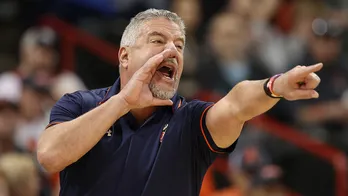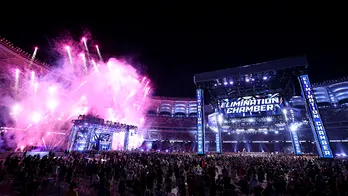Goodbye Doha, hello leagues
In 2011, the India cricket team got less than a week to savour a World Cup win because another season of Indian Premier League beckoned. It’s marginally better for Argentina but as elite club football resumes next week, the varied physical and mental challenges of being involved in a World Cup - playing regularly, warming the bench, the agony of poor performance and the ecstasy of surpassing expectations - will have to be shrugged off sooner than it has been this century.  PREMIUM
PREMIUM
“You need to erase the happiness and disappointment of a World Cup,” said Igor Stimac, the India head coach and former Croatia defender who was part of the 1998 World Cup.
Resuming first, on Monday, is the Premier League. Of the 830 players involved in the 32-team World Cup, 133 were from the Premier League, the most. Fifty-four Premier League players were in the knockout rounds and 14 in the World Cup’s final week. Ligue 1, which had 56 players in Doha, starts on Wednesday and La Liga, which had 83 representatives in the World Cup, one day later. Bundesliga and Serie A restart next year after a winter break.
So, how were the leagues doing when they paused for the World Cup? On 37 points after 14 rounds, Arsenal went into the break on November 13 as Premier League leaders. Trailing by five points are serial champions Manchester City with Newcastle in third place (30 points) having played a game more and Tottenham Hotspur fourth (29). Also in contention for Champions league berths are Manchester United (26) and Liverpool (22) with Chelsea seeking a surge to break into the top four from being eighth.
On 41 points, Lionel Messi and Kylian Mbappe’s Paris St Germain are also five points ahead of second-placed Lens after 15 rounds in Ligue 1. The race is closer in Spain where Barcelona (37) lead Real Madrid by two points after 14 games in La Liga.
New coaches Julen Lopetegui (Wolves), Nathan Jones (Southampton) and Gary O’Neill (Bournemouth) would have used the six-week break to bed in. “Teams that were going well wouldn’t want (a break) but teams that have been struggling with injuries or a lack of momentum wouldn’t mind one,” Owen Coyle, a former coach with Bolton and Burnley and Chennaiyin FC, had told HT before the unique 2022-23 season.
Nayef Aguerd (West Ham), Richarlison (Spurs), Cheikhou Koyate (Forest) and Gabriel Jesus (Arsenal) will not be available as they are recovering from injuries sustained in the World Cup. Erling Haaland, Jorginho and Mohamed Salah would have used the break to recharge batteries and Emile Smith-Rowe to get fit.
But what about those who were in Doha? If this was 1990 or 2002, they would have got 48 days to recover for the league. If this was 2010 or 2014, they would have got 34 days. In 2006 it was 41 days. In 2018, 26 days. This time: eight days.
Asked if he would join Arsenal in Dubai, where they won a four-team Super Cup earlier this month, after Japan lost to Croatia on penalties, Takehiro Tomiyasu said: “I need time to forget about football.” Most clubs have given their World Cup players a week to 10 days off but think about Emiliano Martinez and Messi, who played every minute of Argentina’s campaign (690), or Ivan Perisic (669 minutes) and Mateo Kovacic (635 minutes) trotting out in club kits soon after Christmas.
The relentlessness of football leaves players with little choice. “We make players aware of the fact that after you are out of the World Cup, you have to return to the club and the league immediately. You have to be ready for that,” Erik ten Hag told Manchester United TV.
“I can’t compare with my time because we had finished third and then I had a long summer holiday before regular pre-seasons,” said Stimac on his return to Derby County after the 1998 finals when the league started 34 days after the World Cup.
“But I don’t think it will be difficult,” he said, over phone from Split, Croatia. “Most, if not all, involved in the World Cup are used to playing on Wednesdays and Sundays. With the technology and medical staff available at top clubs, it would be easy to decide who is ready and who needs more time.”
But would it be easy for Martinez and Matty Cash to share the Aston Villa changing room, for Yassine Bounou and Thomas Delaney to do that at Sevilla and Lisandro Martinez, Raphael Varane and Bruno Fernandes at Manchester United? These teammates would have vastly different recollections of the 29-day World Cup. Or Harry Maguire, unsure of a place in the Manchester United defence but having played 429 minutes in the World Cup.
Then there is Conor Coady, Conor Gallagher and James Maddison who have not played a minute in the World Cup and Manchester City’s Kalvin Phillips who was found overweight by Pep Guardiola.
“They are top professionals, I don’t think it will affect them much. In our business, there really is no time to feel sorry for yourself. Because you have a game in three days,” said Stimac.
Experience unrestricted digital access with HT Premium
Explore amazing offers on HT + Economist Start 14 Days Free Trial Already Subscribed? Sign In
Disclaimer: The copyright of this article belongs to the original author. Reposting this article is solely for the purpose of information dissemination and does not constitute any investment advice. If there is any infringement, please contact us immediately. We will make corrections or deletions as necessary. Thank you.







